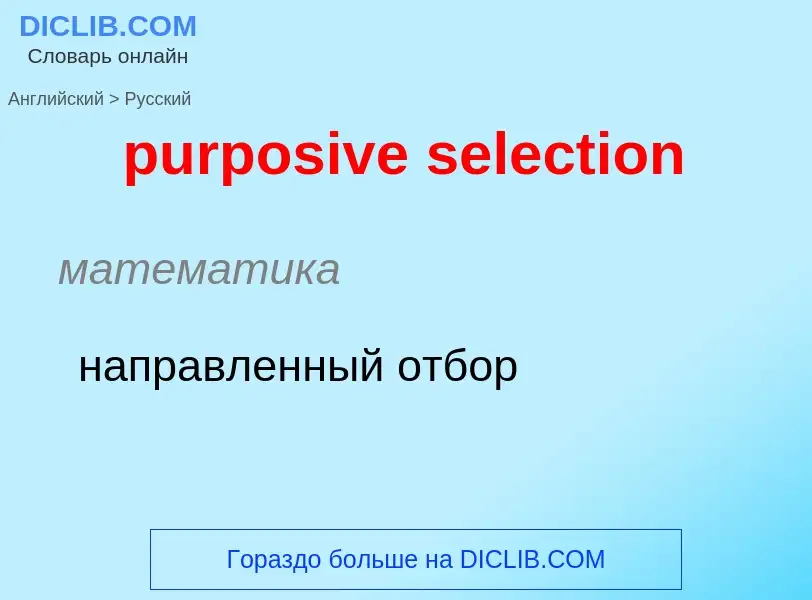Translation and analysis of words by ChatGPT artificial intelligence
On this page you can get a detailed analysis of a word or phrase, produced by the best artificial intelligence technology to date:
- how the word is used
- frequency of use
- it is used more often in oral or written speech
- word translation options
- usage examples (several phrases with translation)
- etymology
purposive selection - translation to russian
математика
направленный отбор
['pə:pəsiv]
общая лексика
намеренный
преднамеренный
Смотрите также
прилагательное
общая лексика
служащий для определённой цели (особ. об органах животного и растительного организма)
решительный
целеустремлённый
намеренный
служащий для определенной цели
специальный термин
целевой
Definition
Wikipedia
In machine learning and statistics, feature selection, also known as variable selection, attribute selection or variable subset selection, is the process of selecting a subset of relevant features (variables, predictors) for use in model construction. Feature selection techniques are used for several reasons:
- simplification of models to make them easier to interpret by researchers/users,
- shorter training times,
- to avoid the curse of dimensionality,
- improve data's compatibility with a learning model class,
- encode inherent symmetries present in the input space.
The central premise when using a feature selection technique is that the data contains some features that are either redundant or irrelevant, and can thus be removed without incurring much loss of information. Redundant and irrelevant are two distinct notions, since one relevant feature may be redundant in the presence of another relevant feature with which it is strongly correlated.
Feature selection techniques should be distinguished from feature extraction. Feature extraction creates new features from functions of the original features, whereas feature selection returns a subset of the features. Feature selection techniques are often used in domains where there are many features and comparatively few samples (or data points). Archetypal cases for the application of feature selection include the analysis of written texts and DNA microarray data, where there are many thousands of features, and a few tens to hundreds of samples.




